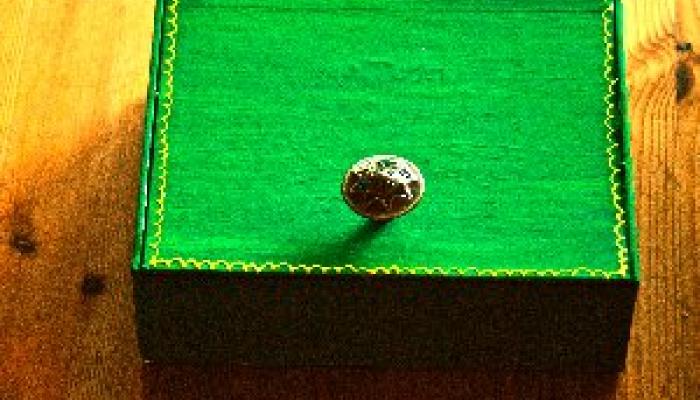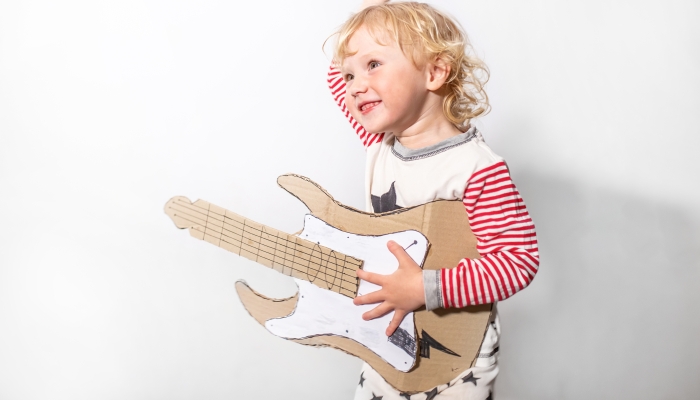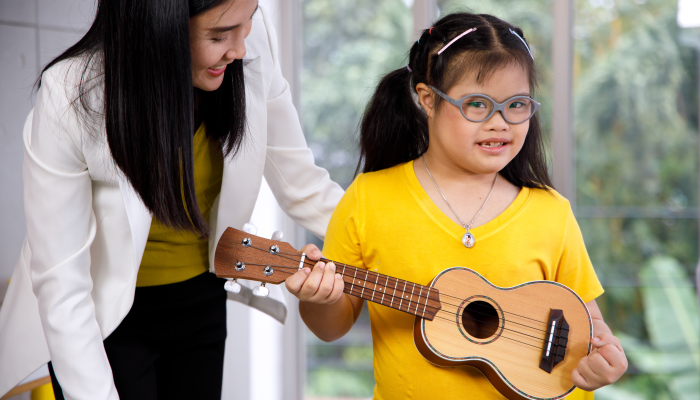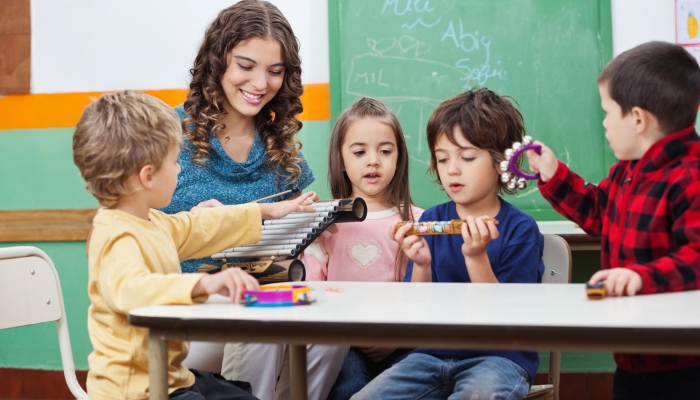The Cajita: A Little Box that is an Instrument

As you travel around the world you’ll find musical instruments made from unusual items.
For instance, in Peru there is an instrument called the cajita. That’s the Spanish word for a little box.
A traditional cajita is made from wooden donation boxes used to collect offerings of money in churches. The box was generally worn around the neck and the top was opened and closed to receive the donations.
Then, when this clever little box was transformed into an instrument, a stick was added that could be used to tap the sides, front or top of the box at the same time the lid was being opened and closed. In addition to tapping the outside of the box and lifting or closing the lid for sound, you might also see players opening the lid and rapping the stick on the inside walls of the box with a movement that looks like stirring soup. Sounds confusing? Once you watch it a time or two, you’ll see exactly how they turned a plain little wooden box into a remarkably fun and clever percussion instrument.
You can check out my simple cajita jam here:
A Homemade Cajita
Can you make a cajita at home without a small scale woodworking project? Sure! You just start with a few simple supplies such as a sturdy box with a lid (cigar boxes are perfect), two dowels or small sticks, a small kitchen cabinet or dresser drawer knob, and materials to decorate your spunky little instrument. A complete supply list is located below.
Once you’ve gotten a hold of a box you can use for this project, begin by decorating it. Paint it, decoupage it, add stickers, construction paper or glue and yarn and make it unique.
Next, add the knob so you can lift the cajita’s lid up and down. To do this, get an adult to assist you in hammering a small nail or using an awl to pierce a hole in the lid of the box. Position that hole in the exact center of the box, about an inch or so away from the edge of the lid that opens up. Once you’ve created the hole, insert your knob in the top of the box with the screw beneath and tighten it into place. Now you should be able to open and close the lid of the box easily.
 Next, cut two wooden dowels. One will weigh down your box so you can play your instrument without the cajita bouncing up and down. The other will be the playing stick that you use to tap and play your instrument. If possible, cut the first dowel to a length just a bit short of the inner width of the box. Glue the dowel in place in the inner front of the box and leave it to dry. In the meantime, cut and decorate your second dowel. This one can be any length that you find comfortable to hold in your hand when you play.
Next, cut two wooden dowels. One will weigh down your box so you can play your instrument without the cajita bouncing up and down. The other will be the playing stick that you use to tap and play your instrument. If possible, cut the first dowel to a length just a bit short of the inner width of the box. Glue the dowel in place in the inner front of the box and leave it to dry. In the meantime, cut and decorate your second dowel. This one can be any length that you find comfortable to hold in your hand when you play.
Once it’s all done you can begin to jam! If you like, make several cajitas and you can play them along with each other or along with other instruments.
Some Cajita Playing Tips
If you think you’re ready to dive right in and start playing, then skip this section. If you want some good starter suggestions, these hints may be helpful in getting the hang of how the cajita is played.
Begin to learn the instrument by tapping the sides and the front and making a pattern. Notice how the two sounds are different. Try something like “front, front, side. Front, front side.” Try something similar with the sides and the top.
Later, add the sound of the lid opening and closing. Since this can sometimes seem like rubbing your stomach and patting your head, it’s best to start with simpler patterns and then work up to more complicated ones.
If you’re working with younger children, sometimes it’s good to let them explore the instrument so they become familiar with the sounds the cajita can make before asking them to play specific patterns. That way, they are more focused on exploration and discovery and are not so nervous about playing rhythms or beats until they are ready to do so.
For children with disabilities, the cajita can be a fun way to work on hand strength and dexterity. The immediate feedback of the hollow sounds is exciting and motivating. Encourage your child to hold the Cajita in one hand while striking with the stick with the other. See if you can get your child to make up their own simple pattern. Opening and closing the lid is another great skill. Start your game with the stick inside the cajita so your child will have to open the lid and get it out before they can play. What fun!
After you begin getting the hang of creating rhythms with your cajita, you may want to have one person play a very simple pattern – such as opening and closing the lid. The next person can add another sound, then the third and forth players add their own simple parts. This can be a fun way of building rhythm in a group or classroom so each child hears how his or her part makes up part of the overall beat. If you check out this jam, you’ll see how the rhythm starts on one instrument called a quijana (a donkeys jawbone), the cajita is added next and finally, a large cajón (or box drum) joins in. How cool!
Supplies for a Homemade Cajita
- Cigar box
- Small knob and matching screw (knobs from kitchen cabinets or small dressers work perfectly)
- Hammer and nail or awl tool (to make a hole for the knob to be inserted in lid)
- Two dowels or sticks – about 8″ in length
- Materials for decorating such as paint, construction paper, stickers, yarn and glue
Award-winning children’s performer, Daria (Daria Marmaluk-Hajioannou), has five CDs that have won national honors. She has the most awesome job of traveling the world to sing for kids and peace. Her website, located at dariamusic.com, was given a 2009 Parents Choice Award for its musical and cultural content.
Related Posts

Music Play
5 Fun DIY Musical Instruments for Kids
Looking for a rainy day activity you can do on a budget? Get your little rock stars into these easy, crafty DIY musical instruments with stuff you have at home.

Autism, Music Play
6 Ways Music Therapy Can Support Children With Autism
By harnessing the power of music, autistic children can develop communication, social, emotional, cognitive, and motor skills. Here’s how!

Music Play
Music and Movement: Enhancing Preschool Learning Through Songs
Music and movement activities for preschoolers can help enhance their cognitive skills and brain development while developing social, emotional, and academic skills.